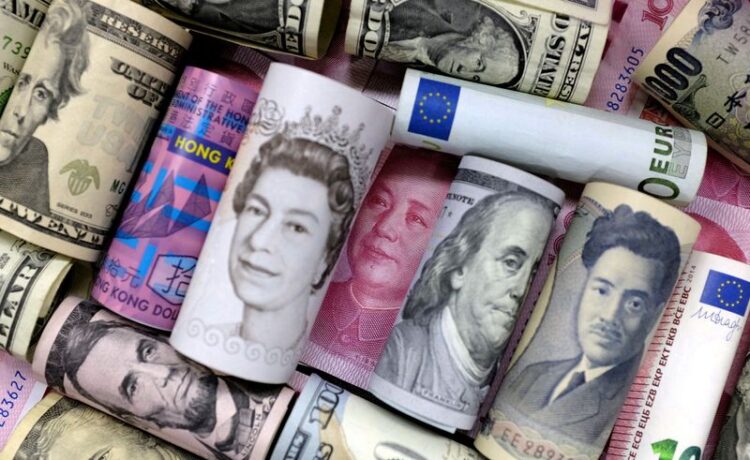By Ankur Banerjee
SINGAPORE (Reuters) -The dollar was firm on Thursday after hotter-than-expected U.S. inflation data squashed lingering expectations of the Fed starting its rate-cutting cycle in June, while the yen languished at the levels last seen in the middle of 1990.
Investor focus will now be on U.S. producer price data and the European Central Bank’s policy meeting later in the day.
The yen’s slide to a 34-year low of 153.24 per U.S. dollar on Wednesday brought intervention fears back as authorities in Tokyo reiterated that they would not rule out any steps to deal with excessive swings.
Japan intervened in the currency market three times in 2022 as the yen slid toward what was then a 32-year low of 152 to the dollar.
On Thursday, the yen strengthened 0.17% to 152.93 per dollar. That was just below the 153.24 level touched on Wednesday after data showed the U.S. consumer price index rose 0.4% on a monthly basis in March, versus the 0.3% increase expected by economists polled by Reuters.
The yen is down nearly 8% against the dollar this year, with the currency rooted near 151 per dollar levels since the Bank of Japan last month ended eight years of negative interest rates.
Low Japanese rates have made the yen the funding currency of choice for carry trades for years, in which traders typically borrow a low-yielding currency to then sell and invest the proceeds in assets denominated in a higher-yielding one.
Kyle Rodda, senior financial market analyst at Capital.com, expects Tokyo authorities to keep talking tough and intervene if things look disorderly.
“The very interesting element is how the Bank of Japan eventually handles this … We might see greater hawkishness from here and that would be the catalyst for a more sustained turnaround,” Rodda said.
Bank of Japan Governor Kazuo Ueda said on Wednesday the central bank would not directly respond to currency moves in setting monetary policy, brushing aside market speculation that the yen’s sharp falls could force it to raise interest rates.
FED WAGERS WILT
Following the inflation data, traders drastically dialled back their bets on interest rate cuts this year as well as when the Federal Reserve will start its easing cycle.
Adding to those doubts, minutes from the Fed’s March meeting, released on Wednesday, show policymakers were already disappointed by recent inflation readings before the latest report.
Markets are now pricing in an 18% chance of the Fed cutting rates in June, compared with 50% before the CPI data, according to CME FedWatch tool, with September turning out to be the next starting point for rate cuts.
Traders are also pricing in 43 basis points of cuts this year much lower than the 75 basis points of easing projected by the U.S. central bank. At the start of the year, traders had priced in over 150 bps of cuts in 2024.
“Two rate cuts in 2024 now look more likely, as the Fed will want more confidence that inflation is trending sustainably lower toward their target,” said Nicholas Chia, Asia macro strategist at Standard Chartered.
“While the Fed is not data-point dependent, the totality of the data clearly suggests there is no need to rush into cuts.”
The hot inflation report led to U.S. Treasury spiking higher and taking the dollar index, which measures the greenback against six rivals, more than 1% higher on Wednesday to near a five-month peak of 105.30. The index was last at 105.15 on Thursday.
The yield on 10-year Treasury notes eased 2.4 basis points to 4.536% on Thursday, hovering near the five-month peak of 4.568% it touched on Wednesday.
The dollar’s surge sent China’s yuan to a five-month low despite the central bank’s efforts to steer it higher. [CNY/]
The euro last bought $1.07465, having dropped 1% on Wednesday ahead of the European Central Bank’s policy decision. The ECB is expected to stand pat on rates but is likely to signal that a rate cut could come as soon as June.
Sterling was last at $1.2548, up 0.07% on the day. The Australian dollar was 0.14% higher at $0.6522, while the New Zealand dollar rose 0.17% to $0.59835.
(Reporting by Ankur Banerjee in Singapore; Editing by Sam Holmes and Jacqueline Wong)
















